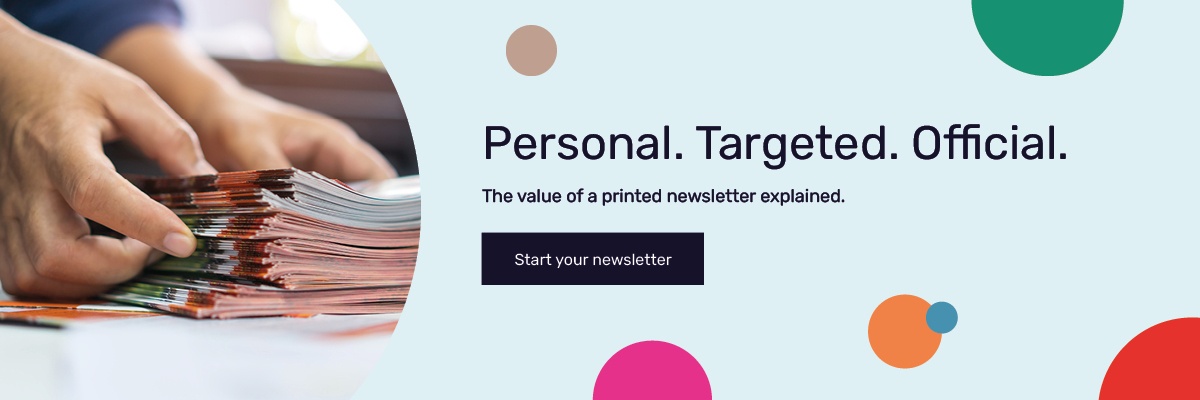Nonprofit newsletters are a great way of informing your readers of what’s going on, reaching out to them asking for help or showing thanks and appreciation. They can be sent both digitally or a quality printed version can be sent through the post too. Not sure on where to start with yours? Well, this post will outline everything you need to cover to produce great nonprofit newsletters that engage.
/JOTW%20Week%2022.gif?width=600&name=JOTW%20Week%2022.gif)
Outline a Clear Goal
Firstly, like when planning for anything else, you should establish a clear goal of what exactly you want to achieve from your newsletter. This could be anything from trying to drum up more donations and sponsors, to a simple informative piece on what’s going on with your charity at the moment.
It’s important that you outline your objective before you put pen to paper as it gives you clear direction of where you want to be heading. A newsletter created without an end goal is likely to be sloppy and not flow correctly.
Try and keep your goals to a maximum of two. A primary and a secondary goal is a good way to engage your reader usually. Trying to cram too much information into your newsletter will only leave your reader feeling bombarded and overpowered, leading to them putting it down and stopping reading.
Analyse Your Audience’s Needs
Before sending your latest renewal of your nonprofit newsletter out, make sure that your distribution list is completely up to date and doesn’t have any holes in it. People move house frequently and email addresses can easily be changed so make sure you have the right ones to avoid any unnecessary costs.
Once you’ve finalised that, you can start to think of what type of content your audience will want to read. If you’ve sent out previous newsletters, what type of content has previously worked and what hasn’t?
Nail Your Format and Distribution
After establishing your readers’ needs, you can start to plan on how you’re going to format and distribute your newsletter. This step is crucial as your format determines how easy it is to read and interpret your information. Also, if you distribute it via the wrong channel or medium, it can make for a pretty unsuccessful newsletter.
For a lot of nonprofit organisations, e-newsletters are the choice of distribution medium due to them being a cheaper alternative. Which does make sense when you’re trying to minimise costs. But with e-newsletters comes a great expectation of constant content. The internet doesn’t stop, new content is produced every second. So, in order for yours not to get lost in the sea, a constant production of new engaging content is a must.
E-newsletters tend to be released on a weekly/bi-weekly basis, whereas more traditional printed methods tend to opt for monthly/bi-monthly renewals. E-newsletters are also a lot more environmentally friendly, which is more than likely to go down well with your readers.
Printed methods are still a great way to release your nonprofit newsletters. Although people may think that direct mail methods no longer work in 2018 due to technology, when done correctly they’re really effective. Click here to view statistics based on how direct mail still works in 2018.
Readers tend to relate more to printed newsletters as they’re easier to understand and grasp than reading from a screen. Your audience will appreciate a personalised printed newsletter through the door, more so than they would an e-newsletter. Anybody can send emails out with a name across the top, as opposed to spending time and money on getting the message to you with a printed newsletter. Direct mail also has a larger response rate.
What Content Should You Include?
Once you’ve decided on your format and your medium, you can start to plan and produce killer content. There’s no point having a solid format and the right distribution channel if you’re going to release bad content, so it’s key that your content is just right.
Think back to your objective and include anything you feel that will mirror this goal. Also, see what’s worked before that your readers have responded well too. If you’re still waiting on sending out your first renewal of your newsletter and are unsure of what to put in, then maybe run a poll on social media and let your readers decide. That way, you know what you then include will be popular with your audience.
You should establish some consistency of what will be included in each edition. This will help your readers identify that it’s your newsletter that they’re reading and engaging with. Profiles on volunteers, practical tips and organisational news are all good topics to include in each renewal around your main points.
Sponsorship
Many nonprofit newsletters will require some form of sponsorship to fund the costs of creation and distribution. A lot of businesses are interested in deals like this and in return may ask for access to your contact database. You should credit your sponsor somewhere in your newsletter, usually with logo placement.
TIP: Remember, no content should be bias or loaded towards your sponsor, you don’t want to compromise the integrity of your whole organisation.
Make Your Next Newsletter a Success
If you stick to these practices, your next newsletter should be packed full of engaging content and be distributed in the right way. And if you can say that about it, it’ll more than likely be a success.
However, if you have missed something out and can’t place your finger on it. Don’t worry. We’ve created a free checklist that’ll ensure you don’t miss anything crucial out. Download it today and get well on your way to creating nonprofit newsletters that engage and encourage.
